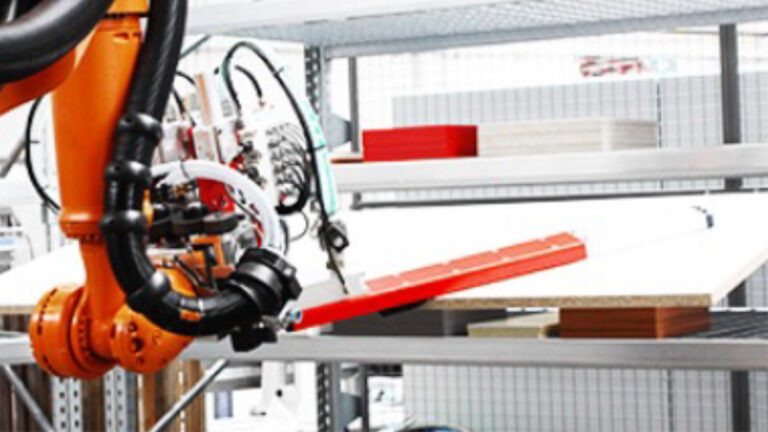Ongoing demographic change and the growing shortage of skilled workers are presenting companies with major challenges. Added to this is a market spoiled by online shopping, which demands ever shorter delivery times and more individualized products. The automation of process chains offers opportunities to conserve resources and streamline processes.
The fact is that people are still making numerous situational decisions in the furniture production process chain. Automation often only takes place in sections, for example in plate optimization or ordering processes. In addition, automation often smacks of job cuts and standardized series production. Both no longer have to be the case. Rather, the aim today is to support and relieve the burden on skilled workers through automation.
There is a fundamental difference between how people and machines handle data and information. Over time, people build up a wealth of experience that enables them to react intuitively and improvise. Machines and software, on the other hand, are characterized by high speed for repetitive tasks in previously clearly defined processes. In order to utilize the advantages of man and machine in equal measure, intrinsic empirical knowledge must be translated into structured information and structured data for machines. During this translation, it is important to prioritize exactly which information is relevant for the process to be automated. If you try to transfer too much intuitive knowledge, the processing systems become slower and slower and the data maintenance overwhelms the users. If too little data is transferred, the automated process risks becoming too generic and does not offer the desired performance. A detailed analysis is therefore required to determine the required data and information. In an honest, future-oriented analysis of your own products and processes, the answer “it’s always been done this way” should not be satisfactory. Examining existing systems with the aim of automated production offers the opportunity to get to know the familiar anew and develop it further. Passion for your own product is important for quality and identity, but new methods also open up unrecognized possibilities and freedom. A neutral view from the outside helps to discover these opportunities and open spaces and provide new impetus. The aim of the analysis is to describe the meta-level of the products in logics and rules. Specifically, this means, for example, not only defining grids in dimensions, but understanding them as logical chains with a mathematical rule. If furniture is described as types with specific modules and sub-modules, clusters can be formed that are grouped by their inner constructive logic, not by their affiliation to a series.
For such a cluster, it is no longer relevant whether it is a tall unit from a kitchen, bathroom or living room furniture range, but rather which rules apply to the type of tall unit with the associated modules. Parametrics and variability are no longer dictated by software, but the exact opposite – software can be selected to suit clearly described individual requirements.




